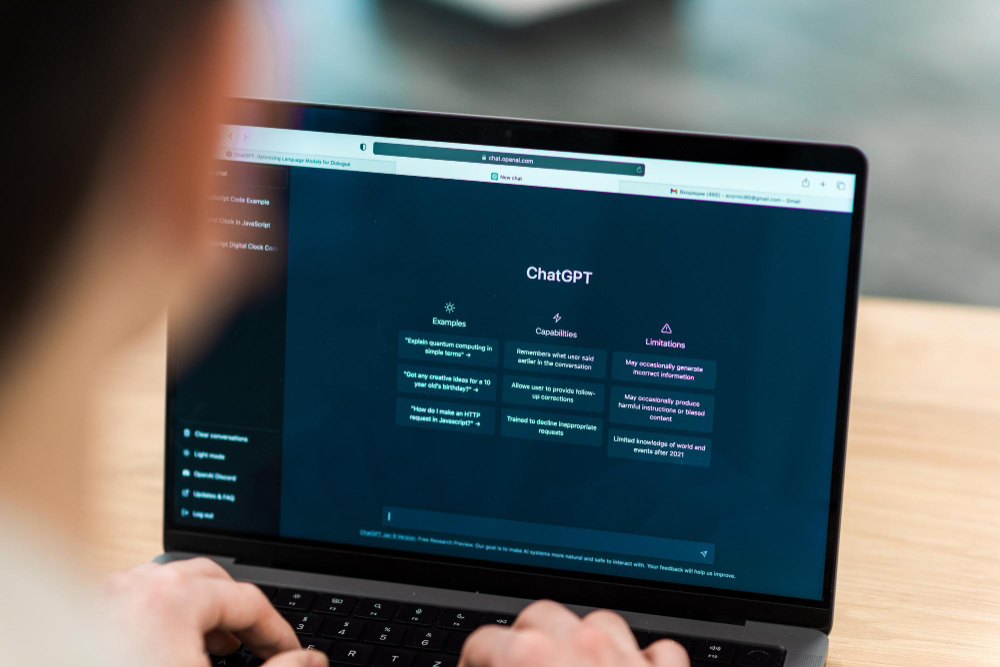Table of Contents
- 1. The evolving Role of Mobile Learning
- 2. Mobile Learning: Strengthening Inclusivity
- 3. Advantages of Mobile Teacher For All Groups
- 4. Issues and Problems with Mobile Learning
- 5. Real Life Applications: Real Life Mobilization of Mobile Learning
- 6. Questions For All Mobile Learning Needs
- Conclusion: Education Within Reach
Mobile learning, which is also known as m-learning is changing the way that people are taught. It provides access to knowledge and resources via mobile channels such as smartphones and tablets. To add on, more than 67% of the global population now has access to mobile phones, therefore education has never been more available to more and more people. Whether it be students, working class or even someone who wishes to gain more knowledge: all of them are now able to learn whenever and wherever they want.
For example, apps that assist in acquisition of literacy are available for the children in isolated areas. Workers can further their education while they travel for work. Teachers also integrate smartphone applications into their lessons. M-learning is customized to suit a variety of learners, especially those who are disabled.
There are some challenges as well. Digital gap and overuse of screens for education purposes still remains a problem. Mobile learning, according to UNESCO, is making education more inclusive for all the people around the world. There exist services such as Coursera or Khan Academy which enable the user to access a large amount of materials regardless of where in the world they are.
One of the best features of mobile learning is that everyone regardless of age is able to have access to education whenever they want. Now and as it develops, there is one question: How can this inclusive, flexible approach to learning be ensured to everyone?
1. The evolving Role of Mobile Learning
Mobile learning addresses the problem of education in different parts of the globe.
It closes gaps that are caused by geographical, financial, and time limitations. With the increased ownership of mobile devices, learning resources are in the hands of the majority.
A major advantage of mobile learning is that it facilitates the learners who need to access learning materials from different geographical regions. In these rural areas, mobile devices enable the learners to have access to online classrooms, applications and large libraries of information. For inculcation, UNESCO supports the use of mobile applications to train people to read even when the internet is unstable.
Affordability is another reason as to why the use of mobile learning is becoming popular. Mobile devices are relatively cheaper when compared to computers or classroom equipment. In addition, students are able to use their mobile devices to access websites without any charges.
Through use of mobile devices, students are able to learn material of their choice and when it is convenient for them: in their house, on the bus or during a break. This is of great help to people who have busy schedules or working professionals who are trying to learn new concepts or practices.
Mobile learning technology also helps in making education more accessible, or, inclusion universal. For example, blind people can use screen readers, deaf people can watch subtitles, and disabled people can use assistive applications.
The World Bank emphasizes that the mobile learning tools have the ability transportation in that they can collapse the global education gap. Regardless of the country one resides in, mobile learning is altering how people want to study.
2. Mobile Learning: Strengthening Inclusivity
Mobile learning is eliminating the barriers that have historically limited education. Consequently, geography, affordability and inclusiveness related challenges can be mitigated by effectively using mobile technology.
In rural areas, mobile technologies extend the reach of education to places with inadequate schools or resources. Guidance from the UNESCO indicates that literacy programs are being made available to learners through the use of simple technologies such as SMS and offline apps. Similarly, these off-line apps may be effective, even in places where the internet connectivity is poor.
Another advantage is financial inclusion. Mobile devices and applications are almost always cheaper than computers and textbooks. Some platforms are free, thus any content created in there can be made available to individuals of all socio-economic classes.
Moreover, inclusion is also one of the main components of mobile learning. Screen readers and text-to-speech apps are examples of assistive technology that opens access to education to disabled people. As a result, mobile learning reduces the disadvantage many learners experience.
Finally, microlearning has been widely promoted using mobile technology. It is possible to study short, precise plates of knowledge in the absence of time. For busy professionals, parents or students, this is particularly advantageous.
Mobile technology is a crucial factor of change for the educational gap. In this context, and though additional efforts may be required, mobile learning is rapidly transforming education into a more inclusive, flexible and accessible service all around the world.
3. Advantages of Mobile Teacher For All Groups
Mobile teacher is a mobile application that changes how each student from kindergarten to a working professional received and interacted with educational content. This helps any individual recommend books for their child, students to receive help, business personnel get hones on the job skills or age old learners to continue without interruptions.
While young learners used mobile apps to visualize reward and use games alongside their learning methods, for apps like Duolingo it catered for language courses. These apps provided a strong learning foundation that was needed for younger learners.
Students however can access a whole new world of education whilst on the go. Video lectures, online courses and libraries assist courser users in studying at any time suiting them best, at home or over crowded public transport. Time management has never been easier with all these options.
Through online courses, mobile platforms provide working professionals to earn certifications and upskill themselves so they can make a smooth transition in their careers.
Mobile tools which help adults sharpen their skills. At home parents tend to use these applications which can later help the children in learning. Such mobile apps tend to focus on helping the child in tracking their progress and feedback which also helps them to stay on the right path.
Overall mobile apps while being beneficial for each specific group, ensure and assist educations while remaining convenient and time saving for everyone.
4. Issues and Problems with Mobile Learning
For mobile learning to be effective, there are quite a number of issues that mobile educators need to address: Inclusion and access, content, and the amount of time that can be afforded to mobile devices, to mention a few.
The digital divide remains a big issue. In many developing regions, limited physical infrastructure or affordability of required components impedes the effectiveness of the mobile devices and even their connectivity to the internet. According to Brookings, AI technologies may exacerbate this divide, as access to advanced educational tools depends on digital infrastructure, which is often inadequate in underprivileged areas.
Content quality is another challenge. Content from mob e-learning is unstructured and unverified. Some established platforms have researched the content and ensured it meets particular educational fuels.
Screen time and the activities that children do after excessive use of mobile devices are also important to manage, particularly for younger users. Constant use of mobile devices may have adverse effects on health on all levels. Educationists even parents need to subsidize mobile learning with offline ones to form better habits.
Equally important is a few moments of teacher training. Without sufficient training, teachers will have great difficulty with properly integrating mobile tools into classrooms and other facilities.
It is also important to note that these challenges can be overcome only through the coordination of governments, educators, and developers in technology as stated above UNESCO. Directionally true, linear looms such as mobile learning should be improved further, so that all intended users future students can have equitable interests in them.
5. Real Life Applications: Real Life Mobilization of Mobile Learning
While mobile learning is a practical idea universal lesson which spans across cultures, while mobile learning remains nascent. Mobile devices around the world have a impact.
Mobile learning fills the gaps where traditional schools are nonexistent, especially in rural areas. SMS Literacy programs & offline apps are benefitting areas that have inadequate resources.
Mobile learning has now been adopted by libraries and NGOs as well. The Unsurpassed education gap that existed in the community is now shrinking as more and more people have started using mobile devices to gain access to digital content provided by Libraries.
Home learning is also being supplemented by mobile apps for parents and tutors and to aid students to stay motivated in their learning journey. These applications provide instant personalized feedback to students and allow constant monitoring of a student's objectives’ progress.
The abovementioned cases are strong indicators of the true scope and power mobile learning holds and how profound an impact it has had across the world. With mobile technology, education is no longer self-centered. Instead, it’s now available for everyone with the aid of mobile phones.
6. Questions For All Mobile Learning Needs
In order for mobile education to grow rapidly in all regions simultaneously, There a few things that must be done. The quality and equity of mobile learning needs to improve in order to reach its full potential. To do this, increased accessible mobile content integrations is needed.
Lowest-cost mobile applications, inexpensive mobile devices, and extended phone coverage are necessary prerequisites in order to solve the technological gap.
The World Bank Coursework mentions two suggestions related to mobile learning. The second suggestion relates to helping learners in underprivileged areas. Towards this goal, a balanced approach should consider the maintenance of the facilities alongside training the personnel.
This will be most compelling whenever there is better education use by all. More investments should be made towards creating better nations, for this purpose.
Instead of using specific terms like global education language should be universal and intelligible, and with mobile learning, effective communication of ideas can be realized. It implies that mobile learners must be somehow effective in terms of boosting their understanding through learning.
Conclusion: Education Within Reach
Mobile learning, as a new approach to education, has changed the way we think about how to go about learning. Learning is more widespread across the world, and education has never been more free than it is today (it can be fulfilled through upskilling or education, etc).
Education equity is the biggest challenge across the globe and mobile initiatives are rightfully being claimed to be a game changer according to UNESCO and the World Bank for this very reason.
Yet there are problems too, the gap the mobile learning solves, is also a gap it has to work around solving, it has to address the issues of poor content, poor distribution, and gross illiteracy especially targeting youth.
Education can be perfect if policymakers along with key stakeholders work together to remove the misinformation surrounding mobile learning, and focus on direct connection with the audience. `

































Comments are closed.